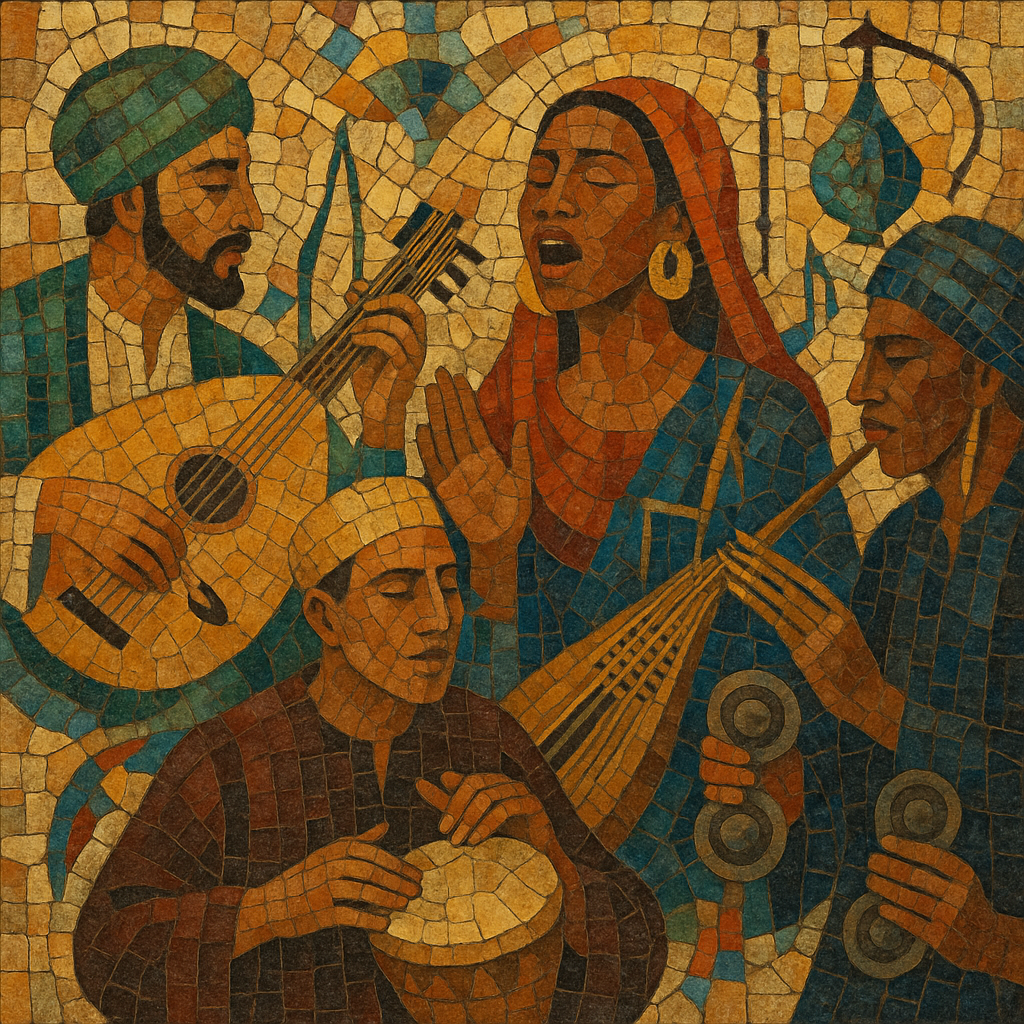North African music is a broad cultural tapestry spanning the Maghreb and the Nile Valley, rooted in ancient Egyptian, Amazigh (Berber), Arab, and Andalusian legacies. It is characterized by modal systems related to the Arabic maqam and Maghrebi nuba traditions, intricate cyclical rhythms, and a performance aesthetic that favors heterophony, ornamentation, and call‑and‑response.
Typical instruments include the oud, qanun, ney, rebab, guembri/sintir, qraqeb (karkabou), bendir, riq, and darbuka/tabla, alongside regional flutes such as the gasba. Vocal styles often feature melismatic lines and microtonal inflections, and lyrics move fluidly between Arabic dialects, Amazigh languages, and Hassaniya or Tamasheq, exploring themes of love, devotion, memory, exile, and desert life.
The region’s music encompasses both classical lineages (Andalusian suites across Algeria, Morocco, and Tunisia; Egyptian art song) and communal/ritual traditions (Gnawa, Sufi hadra, Tuareg desert styles), as well as modern urban forms (raï, shaabi, mahraganat) that fuse traditional rhythms with global pop, rock, and hip‑hop.
North African music traces documented roots to ancient Egypt, where harps, lutes, and flutes accompanied ritual, court, and popular life. Indigenous Amazigh communities maintained distinct vocal and drum traditions that emphasized communal dance, ululations, and poetic exchange, forming a parallel foundation across the Maghreb.
Following the convivencia of al‑Andalus, repertoires and musicians migrated to the Maghreb, shaping the classical nuba suites of Morocco, Algeria, and Tunisia. The spread of Arabic maqam theory, poetic forms (muwashshah, zajal), and urban guilds fostered conservatories and court ensembles. Sufi brotherhoods embedded music within ritual—Gnawa lila ceremonies, hadra, and dhikr—integrating sub‑Saharan timbres (guembri, qraqeb) and trance aesthetics.
Ottoman influence (especially in the east and central Maghreb) introduced military and ceremonial idioms, instrumentation, and repertoire exchange. In the 19th–20th centuries, recording and radio modernized urban art song in Cairo and Tangier/Algiers/Tunis, while cafés and theaters popularized hybrid forms. Under colonial rule, local musicians adapted European harmony and instrumentation, yet maintained modal and rhythmic identities.
After independence, cities nurtured vibrant popular genres: raï (Oran), shaabi (Algiers/Cairo), and later mahraganat (Cairo). Trans‑Saharan currents yielded Tuareg desert rock/tishoumaren, while Gnawa and Amazigh revivals gained global attention. Today, North African music thrives across diaspora networks, blending trap and techno with bendir grooves, and sustaining classical nuba and Sufi lineages alongside festival stages and club culture.


